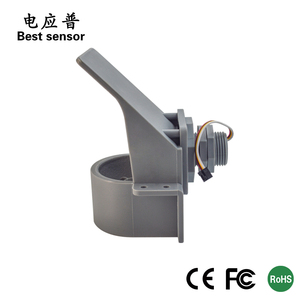Introduction to Sewer Level Sensors
A sewer level sensor is a vital device used for monitoring the levels of wastewater and sewage within underground sewage systems. These sensors are designed to provide real-time data, enabling municipal authorities and facility managers to effectively monitor, control, and maintain sewer systems. By utilizing advanced technology, sewer level sensors can significantly enhance operational efficiency, reduce environmental impacts, and prevent overflow incidents that can lead to costly damages and public health hazards.
Types of Sewer Level Sensors
Sewer level sensors come in various types, each designed to meet specific needs and applications. Here are some of the most commonly used types:
- Ultrasonic Sensors: Utilize sound waves to measure the distance to the surface of wastewater, translating these measurements into fluid levels.
- Pressure Sensors: Measure the hydrostatic pressure exerted by the sewage column, allowing for accurate level detection based on the depth of the liquid.
- Capacitive Sensors: Use changes in capacitance caused by the presence of liquid to determine fluid levels, suitable for smaller pipes.
- Float Sensors: Employ a buoyant device that rises and falls with the water level, triggering electrical signals for level detection.
Applications of Sewer Level Sensors
The implementation of sewer level sensors has become increasingly important across various sectors. Understanding their applications helps to appreciate their value:
- Municipal Waste Management: Used by city agencies to monitor sewage flows in real-time, allowing timely actions to prevent overflows and backups.
- Industrial Wastewater Management: Essential for industries that discharge waste to ensure compliance with environmental regulations.
- Smart City Applications: Contributes to the development of smart infrastructure, enabling automated systems to optimize sewer operations and resource management.
- Environmental Monitoring: Utilized for assessing and managing the impact of sewage systems on local ecosystems.
Features and Advantages of Sewer Level Sensors
Sewer level sensors are equipped with several features that make them indispensable in wastewater management. These features lead to numerous advantages, enhancing their overall effectiveness:
- Real-Time Monitoring: Provides immediate data on sewage levels, allowing for swift decision-making and response to potential issues.
- Durability: Designed to withstand harsh sewer conditions, ensuring long-term, reliable operation.
- Low Maintenance: Many sensors require minimal upkeep, reducing operational costs and effort.
- Data Integration: Easily integrates with existing SCADA (Supervisory Control and Data Acquisition) systems for enhanced monitoring and control.
- Alerts and Alarms: Equipped with alert mechanisms to notify operators of critical level changes, helping prevent crisis situations.
- Environmental Protection: Prevents sewage overflows that could impact local waterways, thus safeguarding public health and environmental integrity.




















































